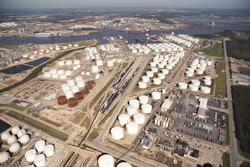As financial pressures in the chemical industry rise, more and more companies are looking for new ways to increase profits and mitigate financial risks. With slim margins and volatile markets, they increasingly are turning to technology and, more specifically, data to uncover opportunities to lower expenses while at the same time maintaining, or even improving, time to market and product quality.
In today’s digital economy, chemical companies can access tremendous amounts of data, aggregate and analyze it with state of the art in-memory technology. Then, customized algorithms are applied, which typically sit on top of in-memory data bases, to identify patterns. By looking at variables and using basic statistical techniques (e.g. trend analysis), they can find new ways to reduce waste and expedite processes. In fact, chemical companies can use data to control costs throughout the product lifecycle, from research and development, to delivering and pricing.
From Test Tube to Tablet = Less Costs Due to Process Improvements
In the chemical industry, innovation begins in the lab. Lab research typically involves lengthy consecutive trials, in which parameters are varied in order to optimize the features and performance of a new product or formulation. Using past results and exposing those to data mining techniques and predictive algorithms could avoid such extensive lab testing and shorten test trials as well as associated costs. In addition, in-memory technology, along with powerful analytics including structured and unstructured search algorithms, could help to better leverage existing intellectual property or patents. By doing so, chemical companies could avoid redundant efforts in R&D, reduce the risk of patent infringement, and avoid penalty payments.
Compliance = Less Costs by Mitigating Risk Mitigation
The ever-increasing number of regulations in the chemical industry makes managing compliance a challenge. Chemical manufacturers must thoroughly understand regulations and their potential impact on product formulations including revenue impact by product, customer and region or country. Rapid “what if” simulations help decision makers evaluate existing formulations and associated revenue, as well as look at developing new ones. The insights help stay ahead of competitors, but also mitigates the risk of products made with non-compliant materials.
Lights Out Manufacturing = Less Costs with Automation
Automation on the manufacturing floor is one of the most obvious cost-cutting benefits of technology. Step changes in costs and performance are possible through event-driven adjustments of production plans and schedules. Automation technology can also help overcome organizational barriers, increase quality, and reduce tedious, manual testing. Nearly 80 percent of Dow Chemicals’ testing is done using automation, saving an estimated 8,000 labor hours in a single year and reducing test cycle times by 50 percent. The company also improved production system reliability with a 25 percent defect reduction (SAP for Chemicals).
Quality Control = Less Costs by Reducing Rework
The integration of data analytics, technology and business operations allows chemical manufactures to manage product quality in real-time. Data analytics provides managers with greater understanding of the parameters affecting quality output. Managers can use data analytics to first predict the quality of products being produced under certain production conditions; and then make adjusts to the equipment or production parameters on-the-fly to ensure first pass quality of products or formulations. This helps avoid costly rework that can occur when quality is missed the first time.
Predictive Maintenance = Less Costs Due to Reduced Asset Downtime
When an asset on a production site, such as a pump or tank, fails unexpectedly, production halts. This down-time can add millions of dollars to a plants cost. Fortunately, it is now possible to predict when assets should be serviced, so they can be repaired before causing costly problems. Predictive maintenance depends on continuously monitoring the data transmitted from equipment, such as temperature, speed and vibrations. When an abnormality is detected, an alert is issued. Some companies have taken this one step further, using algorithms to compare results under multiple scenarios and make adjustments to balance multiple parameters, such as equipment life time with run rates and production levels.
Real-time Pricing Management = Less Cost by Automated Price and Margin Management.
Today, customers demand accurate pricing information to make smart purchasing decisions. In the new digital economy, it is now possible to provide on-the-spot, competitive pricing for customers and prospects including delivery commitments. This can be done instantaneously when companies have automated and integrated systems that can provide real-time insights into raw material prices, activity-based costing parameters and available stock or production capacity. During the sales process, executives can drill down to the stock keeping unit (SKU) level, look at margins on-the-fly and determine the most appropriate product pricing and delivery by customer.
No Touch Order to Delivery = Less Costs with Greater Visibility
With increased connectivity between equipment, systems, platforms and supply chains companies can now offer no touch ordering and streamline delivery. By integrating inventory and production plant data, chemical companies can provide their customers with consumer experience they’ve come to expect. For example, once customers log into a customer portal, they could view customized pricing information, display product information such as safety data sheets, modify quantities, change shipping options, review order history and even place an order online. Once the order is complete, it gets routed to the fulfillment manager who uses a data-based dashboard to identify inventory issues. Should a problem be detected (i.e. inventory shortfall), the system automatically offers solutions like purchasing more products or reallocating materials. Using analytics to combine order trends with real-time demand information results in more accurate forecasting, thereby alleviated projected inventory shortages before they occur.
Chemical manufactures operate in one of the most complex business environments. With variable market conditions, business must focus on what they can control, such as lowering costs without impacting product and service quality. Fortunately, through leveraging digital technology, companies are finding innovative ways to re-imagine business processes and reduce expenses throughout the product development and delivery process.
Stefan Guertzgen is the Global Director for Industry Solution Marketing Chemicals at SAP.






















